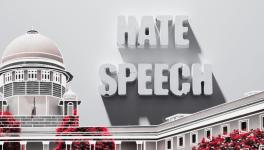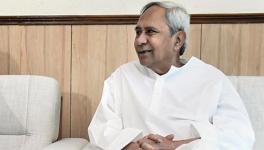10 Years Post Kandhamal Riots: Let Us Not Forget How It Tore the Secular Fabric

Though 10 years have passed after the Kandhamal riots, the survivors and the riot-affected people are still waiting for justice with haunting memories of the past. The series of incidents of violence against Christians and their institutions in Kandhamal district of Odisha in 2008, still remains a blot on the nation’s secular fabric.
One of the survivors of the riots, 48-year-old Surendra Nayak, who lives with fearful memories of 2008, says that though he tries to forget the incidents of 2008, the throbbing pain in his foot pierced by a spear makes the fear fresh in his mind.
“For years, I wet my bed because of the nightmares. Like an animal, I was chased through the streets of Tiangia Budedipada village of Raikia block by men with swords, spears and tridents, hooting, hollering and hurling insults at my faith,” narrated Nayak, and added that he survived only because he ran into a jungle.
The hate campaigns against Christians in Kandhamal had begun in the late 1960s, and it had continued for long, resulting in violence against minorities at frequent intervals including in 1980s, 1990s and 2000s. Again in 2007 and 2008, two-violent anti-Christian communal attacks had taken place. In August 2008, one of the worst incidents of communal violence had taken place in the Kandhamal district, following the attacks on Christians during the Christmas of 2007. However, the August wave of violence was sparked off after the killing of Swami Lakshmananda Saraswati along with four others on August 23.
The Swami, a life member of the RSS, who was involved in the anti-conversion campaign, and others were suspected to be killed by the Maoist insurgents. Swami had also led the ‘ghar vapasi’ (homecoming) programme – re-converting the natives who were practising Christianity.
However, on August 25, the day of the funeral of the Swami, the RSS and its affiliates announced a general strike across the state. “Under the leadership of BJP, RSS and VHP, the 150 km-long procession with the body of Laxmananada was organised,” says a report titled as ‘Anti-Christian Violence in the Indian State of Orissa in 2008’, prepared by an NGO.
Moreover, the campaigns by the Hindu organisations presented the minority communities as threats to the local people. Furnishing false statistics, the Sangh leaders had campaigned about a dangerous rapid growth of the Christian and Muslim population. Their leaders even claimed that the missionary activities were dangerous for the indigenous culture, and accused them of forced conversions. However, the church had established eight schools, five dispensaries, two hospitals, 13 hostels for orphans and displaced children, four study homes and seven vocational training centres in Kandhamal district. Because of these campaigns, there was a general sentiment that Christians were in a better position than the Hindus or non-Christian STs.
In fact, the Indian People’s Tribunal on Environment and Human Rights, in its 2006 report, itself pointed out that “the inculcation of hatred toward minorities in Orissa is deep, so much so that, in the event of another massacre, there will be little hesitation in the execution of the most brutal acts.”
So, the violent mob set fire to many Christian settlements along with the buildings that housed nuns and priests. According to the official data, in the violence that was sparked off in August, 52 people were killed. Out of 52, 38 died in the communal violence, along with Swami Saraswati, seven others were the victims of the Maoist terror and two police persons, while four people were killed during police intervention.
However, human rights groups estimate that more than ___ people including women, children, Dalits and Adivasis were killed. Three women were gang-raped and many injured. In Kandhamal district alone, more than 600 villages were ransacked, nearly 5,600 houses were looted and set to fire, and about 54,000 people were displaced.
The report by the Centre for Child Rights further says “Close to 300 churches, big and small, were destroyed; 13 schools and colleges and the offices of five NGOs damaged. About 30,000 people had to live in relief camps for months. About 2,000 people were forced to convert to Hinduism. More than 10,000 children had their right to education snatched away because of displacement, fear and severe disruption.”
Following the violent, right-wing outfits including Vishwa Hindu Parishad (VHP) led the conversion programmes in the region. "If you go on being Christians, we will burn your houses and your children in front of you, so make up your minds quickly," one of the persons who had been forced to convert was reportedly told.
“I was scared. Christians have no place in this area now.”
On the other hand, one of the lawyers for the riot-affected Pana Catholics, who await legal closure on cases related to the riots, Father Dibakar Parichcha said: “Due to the poor police investigation, 4,000 people were acquitted. Some of the ring leaders, who were convicted because of overwhelming evidences, are out on bail.”
While the book titled Kandhamal Craves for Justice by Anto Akkara (released on August 23, 2013), scrutinises the failure of the constitutional watchdogs like the judiciary and the National Human Rights Commission in the secular and human rights prism.
In the book, it is described that though more than 84,000 persons were named as accused by the survivors in various 3,232 complaints, the police had registered only 828 FIRs. Out of 11,349 accused named in FIRs, only 3,181 were brought to trial and only 477 of them were found guilty. The author also states that even in the brutal murders of Christians, the fast track trials failed to uphold justice. In the 27 murder verdicts given by the two Fast Track Courts, the accused were convicted under 302 only in two cases due to shoddy investigation, plaint prosecution and rampant intimidation of key witnesses even in the court premises, forcing them to turn ‘hostile’ during the trial.
However, the Supreme Court in 2016 had asked the Odisha government to re-investigate 315 cases that were closed, out of a total of 827 cases. These cases were closed since the police claimed that the offenders could not be traced or no offenses were made out. Though 362 trials were completed, only 78 had resulted in the conviction.
As the Kandhamal survivors wait for justice, attacks against minorities is still a continuing story. Recently, one of the BJP MPs, Bharat Singh even claimed that Christian missionaries are a threat to the unity and integrity of the country.
Last but not the least, in the initial six months of 2017, 410 incidents of attacks on Christians in India had been reported in India which is almost as many as the total for the whole year 2016 – 441, says the World Watch Monitor. Again, India fell to number 15 in 2017 from 31 in 2013 in the list of countries “where the practice of Christianity is a high-risk activity.”
Get the latest reports & analysis with people's perspective on Protests, movements & deep analytical videos, discussions of the current affairs in your Telegram app. Subscribe to NewsClick's Telegram channel & get Real-Time updates on stories, as they get published on our website.























